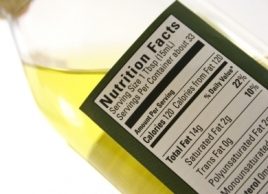Hey Canada, let’s ban trans fats
Why voluntary trans fat reductions alone likely won’t prevent thousands of unnecessary deaths

Source: Best Health Magazine, Spring 2008
We all know trans fatty acids are bad. After all, researchers blame these partially hydrogenated, artery-clogging oils for up to 2,000 heart-attack deaths a year in Canada. Recent preliminary studies also indicate that trans fats may even trigger infertility and diabetes. Yet Canadians are still eating up to two and a half times the amount of trans fat considered “safe” by the World Health Organization, and they often don’t even know it. Nor is that bound to change any time soon.
Given the fact that we were the first country to mandate trans-fat labelling on prepackaged goods, why is Canada now lagging behind on anti-trans-fat legislation? Consider that Denmark already has strict regulations on trans fats in the marketplace, effectively eliminating them from its food supply. New York City and Philadelphia are phasing out the harmful oils from their restaurants, and numerous U.S. states, including California and Vermont, are considering state-wide bans of trans fats in retail food establishments and chain restaurants. Meanwhile, here in Canada we have…well, a government plea for the food industry to voluntarily remove trans fats from restaurant and grocery products within two years. That’s not good enough.
Sure, good intentions abound: The government of Ontario has taken steps to ban trans fats where it can, such as in school cafeterias and vending machines. But to date, only the Calgary Health Region regulates minimal trans-fat levels in restaurants—and it’s the only jurisdiction in Canada with a set date (July 1, 2009) for regulating it in processed foods (packaged and prepared products in grocery stores).
We can’t all move to Calgary, but we can ask the federal government to do more, and to do it faster (download a letter to your MP here). Specifically, in 2006 the Trans Fat Task Force (which included, among others, the Heart and Stroke Foundation, and Food and Consumer Products of Canada) called for regulations on retail and restaurant foods (domestic and imported) that would limit trans-fat levels to two percent in vegetable oils and spreadable margarines, and five percent in all other food products. The government responded with no binding regulations (but says that if significant progress has not been made by June 2009, it will consider enacting regulations).
Still, Sally Brown, CEO of the Heart and Stroke Foundation, is cautiously optimistic on the issue. “The government gave a very strong message that it expects industry to change,” she says. After all, 60 percent of cookies met the proposed five percent trans fat limit in 2006, compared to 33 percent in 2005, according to Health Canada.
Yet cookies in which trans fat makes up 45 percent of total fat are still on supermarket shelves. Yes, some restaurants and food manufacturers, such as Voortman cookies, Swiss Chalet and Pizza Pizza, have been phasing out or have banned trans fats. And admittedly, it isn’t easy to develop alternatives to trans fats that taste good without jacking up saturated fats, sugar or sodium. Furthermore, city-wide bans on restaurant trans fats may unfairly penalize eateries, while the harmful oils remain in grocery products. Ron Reaman, vice president of government affairs for the Canadian Restaurant and Foodservices Association, says he’s confident the food industry will meet and exceed the voluntary limits and timelines. “The entire food value chain, from producers to processors to retail and foodservice, all need to work together to eliminate trans fats at source.”
But without enforceable regulations, the good works of a few companies can be undermined by domestic and imported foods that don’t comply. So it’s still trans-fat roulette for the consumer. That’s why task force member Bill Jeffery, national coordinator of the Centre for Science in the Public Interest (a health and nutrition advocacy group), isn’t pleased with the voluntary approach. “It’s not enough to wait two years, when as many as 2,000 people will die from trans-fat-related heart attacks per year,” he says. And, he adds, it could take two to four years after the voluntary two-year period before a ban on trans fats takes effect.
What’s a confused consumer to do? We can avoid products with ingredient lists that include words such as “partially hydrogenated” or “shortening,” and look for products listing zero trans fat (although these may still contain 0.2 grams of the stuff per serving, which can add up). But restaurant diners beware: Only a handful of restaurants are trans-fat-free; menu labelling is not required; not all chains post nutrition information on their websites; and many waiters respond with a blank stare when asked about trans-fat content. It all puts too much onus on the diner, says Jeffery. “The best solution is to regulate it out of the food supply.”
Found this article informative? Subscribe to our magazine today and receive more Best Health exclusives delivered to your door!




